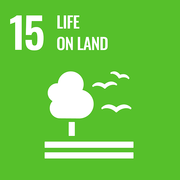
Tracing the movements of Iron Age Mediterranean populations with DNA mapping
The Iron Age was a dynamic period that saw the expansion of Greek and Phoenician colonies and the rise of Carthage as the dominant maritime power in the Mediterranean, even before the rise of Rome. The increased ease of long-distance travel thanks to advances in sailing and maritime navigation had facilitated travel and established new networks of interaction for trade, colonisation and conflict.
A new international study, coordinated by researchers from Sapienza University of Rome in collaboration with the Universities of Vienna, Stanford and Chicago, has analysed the genome of thirty individuals belonging to the populations that inhabited the cities of Kerkouane (Tunisia), Sant'Imbenia (Sardinia, Italy) and Tarquinia (central Italy) during the Iron Age to explore the complex interaction between local continuity and mobility that shaped central Mediterranean societies.
The results, published in the journal Nature Ecology & Evolution, showed, in all the groups analysed, a significant contribution of native populations, as well as the presence of individuals with ancestry from other parts of the Mediterranean region. These factors highlight both the role of local populations and the extreme interconnectedness of populations in the Mediterranean.
In particular, the high number of individuals with North African ancestry in central Italy may reflect the close ties between Carthage and the Etruscan-speaking region, sometimes allied against common adversaries.
Or the presence in Kerkouane of several individuals similar to contemporary Italian and Greek populations suggests a two-way movement within the central Mediterranean. A discovery of great interest is that at both Kerkouane and Tarquinia, individuals were found buried together having different and geographically distant ancestors. This seems not to have resulted in differential treatment in funerary celebrations.
"The possibility of analysing data from neighbouring Bronze Age sites in Sardinia and central Italy", says Michaela Lucci of Sapienza University, one of the first co-authors of the research, "allowed us to have a precise indication of the peopling pattern of these two areas".
Information on Iron Age North African communities, on the other hand, is very limited. Until now, no whole-genome ancient DNA research had been conducted in north-west Africa from this period, despite the complex history of the region. The mitochondrial genetic material of an individual from Carthage is the only existing ancient DNA data from the region that has allowed reconstruction of the movements in that area.
"The sub-Saharan ancestry we observe in Kerkouane", says Alfredo Coppa of Sapienza University, senior author of the paper, "may derive from direct or indirect contact with nomadic populations of the Sahara. The Iron Age may also have been a key period for genetic flow across the Sahara, and this seems to be a very topical scenario".
The research was financed with Sapienza (Internationalisation) funds, Ministry of Foreign Affairs and International Cooperation (MAECI) DGDP UFF. VI, Ministry of Education, University and Research (MIUR) via ISMEO - International Association for Mediterranean and Oriental Studies.
References:
A genetic history of continuity and mobility in the Iron Age central Mediterranean - Hannah M. Moots, Margaret Antonio, Susanna Sawyer, Jeffrey P. Spence, Victoria Oberreiter, Clemens L. Weiß, Michaela Lucci, Yahia Mehdi Seddik Cherifi, Francesco La Pastina, Francesco Genchi, Elisa Praxmeier, Brina Zagorc, Olivia Cheronet, Kadir T. Özdoğan, Lea Demetz, Selma Amrani, Francesca Candilio, Daniela De Angelis, Gabriella Gasperetti, Daniel Fernandes, Ziyue Gao, Mounir Fantar, Alfredo Coppa, Jonathan K. Pritchard, & Ron Pinhasi - Nature Ecology & Evolution (2023) doi.org/10.1038/s41559-023-02143-4
Further Information
Michaela Lucci
Department of Environmental Biology
michaela.lucci@uniroma1.it
